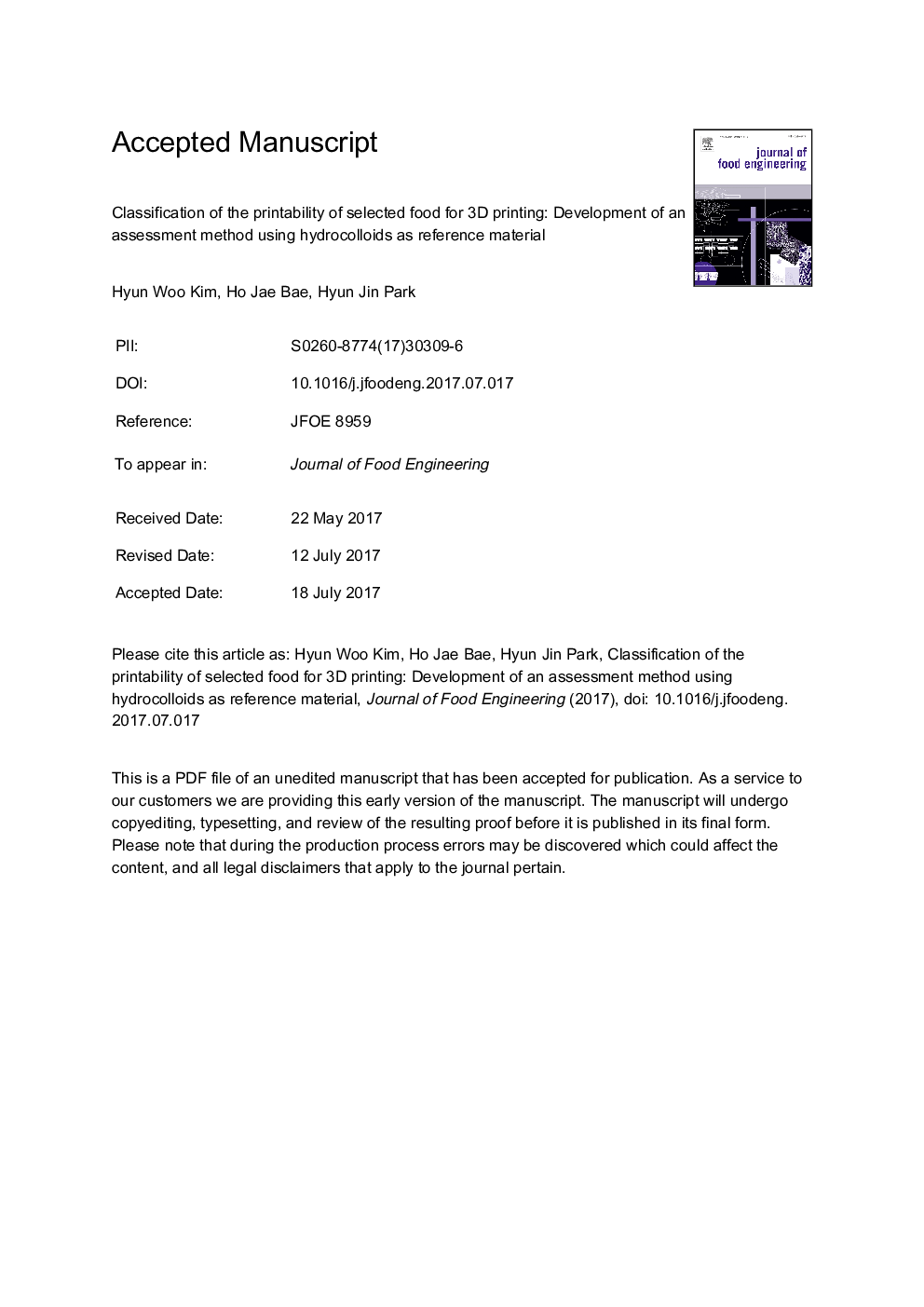| کد مقاله | کد نشریه | سال انتشار | مقاله انگلیسی | نسخه تمام متن |
|---|---|---|---|---|
| 4908890 | 1427086 | 2017 | 37 صفحه PDF | دانلود رایگان |
عنوان انگلیسی مقاله ISI
Classification of the printability of selected food for 3D printing: Development of an assessment method using hydrocolloids as reference material
ترجمه فارسی عنوان
طبقه بندی نسخه قابل چاپ مواد غذایی انتخاب شده برای چاپ سه بعدی: ایجاد یک روش ارزیابی با استفاده از هیدروکلوئید ها به عنوان مواد مرجع
دانلود مقاله + سفارش ترجمه
دانلود مقاله ISI انگلیسی
رایگان برای ایرانیان
موضوعات مرتبط
مهندسی و علوم پایه
مهندسی شیمی
مهندسی شیمی (عمومی)
چکیده انگلیسی
The printability of materials used in extrusion based 3D printing is one of the most important properties especially when fabricating objects with architectural complexities. However, this parameter is influenced by several factors (temperature, components, and additives) which makes thorough evaluation and classification challenging. In this study, the printability of food-ink for 3D food printing applications was evaluated by systematically adapting evaluation techniques such as dimensional stability test, handling properties assessment, and shear rheology test using edible hydrocolloid as reference materials. Methylcellulose (MC) was selected as a suitable reference material for its capability to simulate the printability of various types of food applications. In dimensional stability test, the concentrations of reference hydrocolloid mixture that could fabricate structures with height of 20, 40, and 80Â mm without significant collapse were 9%, 11%, and 13%, respectively. The deformation behavior and handling properties of printed foods were classified based on the reference material produced at various concentrations (5%-20%). Shear modulus of all samples were in complete agreement with simulation results based on the dimensional stability test indicating that the printability of foods can be predicted and classified by comparing its properties to reference material. The newly established classification system of printability was categorized into grades A, B, C, and D according to the dimensional stability and degree of handling. The validity of this classification system was verified by 3D-printing tests.
ناشر
Database: Elsevier - ScienceDirect (ساینس دایرکت)
Journal: Journal of Food Engineering - Volume 215, December 2017, Pages 23-32
Journal: Journal of Food Engineering - Volume 215, December 2017, Pages 23-32
نویسندگان
Hyun Woo Kim, Hojae Bae, Hyun Jin Park,
